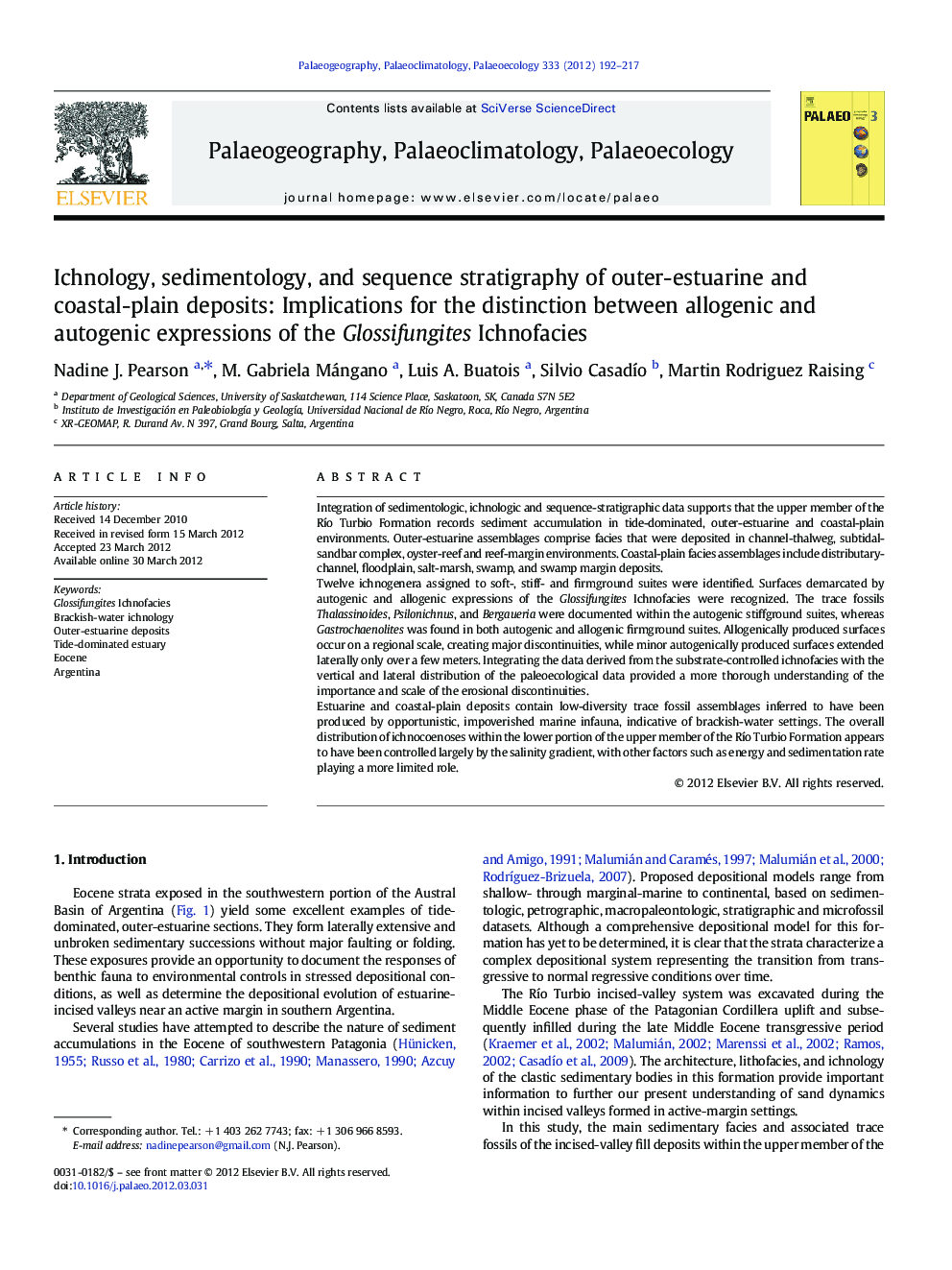| کد مقاله | کد نشریه | سال انتشار | مقاله انگلیسی | نسخه تمام متن |
|---|---|---|---|---|
| 4466956 | 1622233 | 2012 | 26 صفحه PDF | دانلود رایگان |

Integration of sedimentologic, ichnologic and sequence-stratigraphic data supports that the upper member of the Río Turbio Formation records sediment accumulation in tide-dominated, outer-estuarine and coastal-plain environments. Outer-estuarine assemblages comprise facies that were deposited in channel-thalweg, subtidal-sandbar complex, oyster-reef and reef-margin environments. Coastal-plain facies assemblages include distributary-channel, floodplain, salt-marsh, swamp, and swamp margin deposits.Twelve ichnogenera assigned to soft-, stiff- and firmground suites were identified. Surfaces demarcated by autogenic and allogenic expressions of the Glossifungites Ichnofacies were recognized. The trace fossils Thalassinoides, Psilonichnus, and Bergaueria were documented within the autogenic stiffground suites, whereas Gastrochaenolites was found in both autogenic and allogenic firmground suites. Allogenically produced surfaces occur on a regional scale, creating major discontinuities, while minor autogenically produced surfaces extended laterally only over a few meters. Integrating the data derived from the substrate-controlled ichnofacies with the vertical and lateral distribution of the paleoecological data provided a more thorough understanding of the importance and scale of the erosional discontinuities.Estuarine and coastal-plain deposits contain low-diversity trace fossil assemblages inferred to have been produced by opportunistic, impoverished marine infauna, indicative of brackish-water settings. The overall distribution of ichnocoenoses within the lower portion of the upper member of the Río Turbio Formation appears to have been controlled largely by the salinity gradient, with other factors such as energy and sedimentation rate playing a more limited role.
► We integrate multiple datasets to interpret environments found in this formation.
► Sedimentological, ichnological, and macropaleontological information is utilized.
► Deposition took place in outer estuary and coastal plain environments.
► Characteristics of stiff- vs. firmground trace fossil assemblages are detailed.
► From these traits the importance/scale of erosional discontinuities can be resolved.
Journal: Palaeogeography, Palaeoclimatology, Palaeoecology - Volumes 333–334, 15 May 2012, Pages 192–217